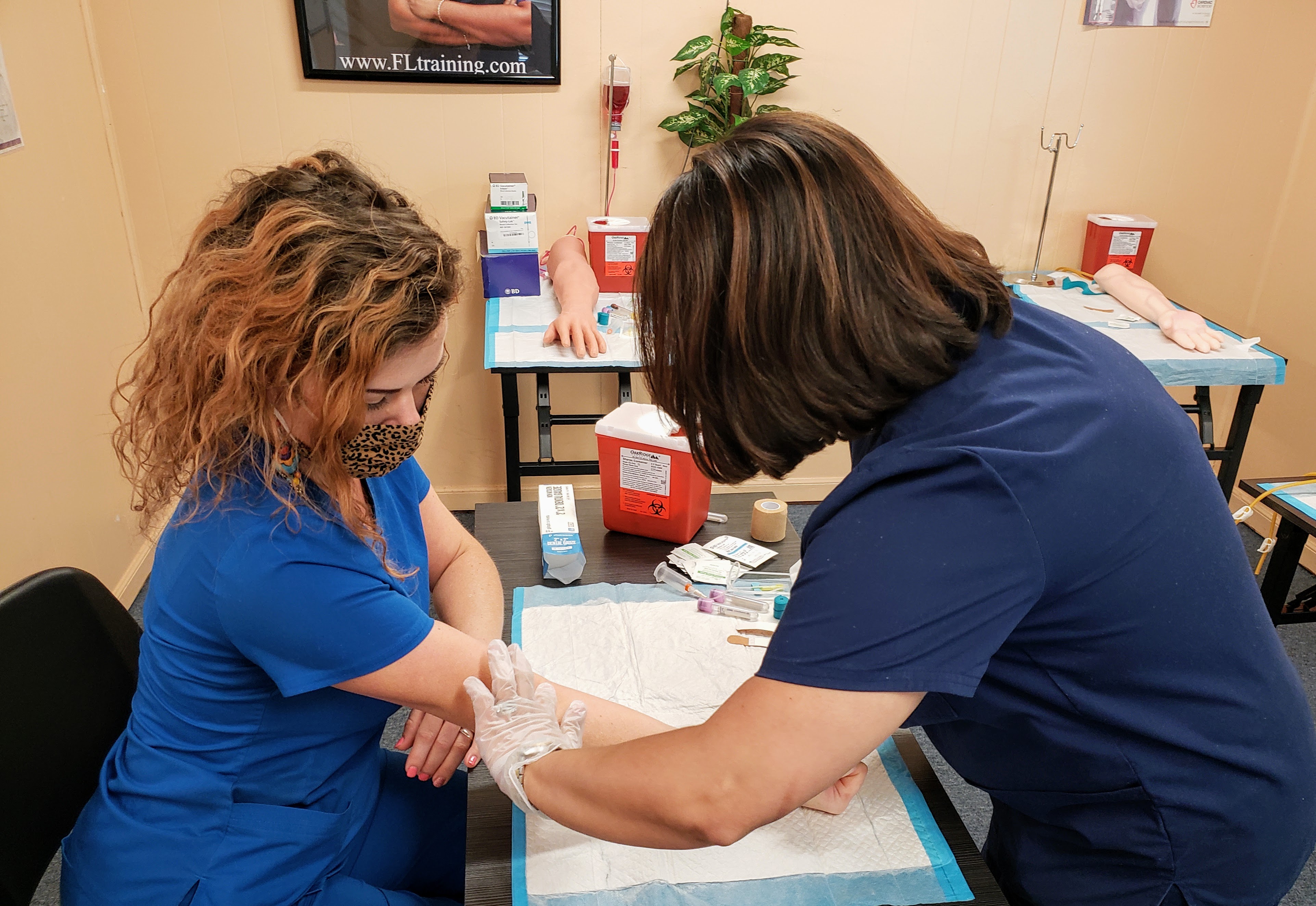What Does Northeast Medical Institute - New Haven Campus Phlebotomy Course & Cna Class Mean?
What Does Northeast Medical Institute - New Haven Campus Phlebotomy Course & Cna Class Mean?
Blog Article
Some Ideas on Northeast Medical Institute - New Haven Campus Phlebotomy Course & Cna Class You Need To Know
Table of ContentsNot known Factual Statements About Northeast Medical Institute - New Haven Campus Phlebotomy Course & Cna Class The Ultimate Guide To Northeast Medical Institute - New Haven Campus Phlebotomy Course & Cna ClassNortheast Medical Institute - New Haven Campus Phlebotomy Course & Cna Class Can Be Fun For AnyoneSome Known Details About Northeast Medical Institute - New Haven Campus Phlebotomy Course & Cna Class All About Northeast Medical Institute - New Haven Campus Phlebotomy Course & Cna ClassThe smart Trick of Northeast Medical Institute - New Haven Campus Phlebotomy Course & Cna Class That Nobody is Discussing
However, the usage of such gadgets must be come with by various other infection avoidance and control techniques, and training in their usage. Not all safety and security tools apply to phlebotomy. Prior to picking a safety-engineered gadget, individuals should thoroughly explore readily available gadgets to determine their appropriate usage, compatibility with existing phlebotomy methods, and efficacy in protecting staff and patients (12, 33).For settings with reduced resources, price is a motoring consider purchase of safety-engineered gadgets - Phlebotomy Classes. Where safety-engineered gadgets are not readily available, knowledgeable use of a needle and syringe serves. Unexpected exposure and certain information concerning an occurrence should be videotaped in a register. Support solutions ought to be advertised for those who undertake unexpected exposure.
One of the necessary pens of top quality of care in phlebotomy is the involvement and teamwork of the person; this is mutually advantageous to both the health and wellness employee and the person. Clear details either written or verbal should be available to each individual that goes through phlebotomy. Annex F offers sample text for discussing the blood-sampling procedure to an individual. In the blood-sampling space for an outpatient department or clinic, provide a comfy reclining sofa with an arm rest.
Northeast Medical Institute - New Haven Campus Phlebotomy Course & Cna Class for Dummies
Ensure that the indications for blood tasting are clearly specified, either in a composed method or in documented instructions (e.g. in a lab form). In any way times, follow the methods for infection avoidance and control noted in Table 2.2. Infection avoidance and control practices. Gather all the tools needed for the treatment and place it within risk-free and very easy reach on a tray or trolley, making sure that all the items are plainly noticeable.
Where the client is adult and mindful, adhere to the actions outlined below. Introduce on your own to the individual, and ask the person to mention their complete name. Check that the laboratory type matches the individual's identification (i.e. match the person's details with the laboratory kind, to ensure accurate identification). Ask whether the patent has allergies, phobias or has ever fainted during previous injections or blood draws.
Make the individual comfy in a supine setting (if possible). Place a tidy paper or towel under the patient's arm. Go over the examination to be done (see Annex F) and acquire verbal consent. The patient has a right to reject an examination at any moment before the blood sampling, so it is necessary to make certain that the person has actually comprehended the procedure.
The Greatest Guide To Northeast Medical Institute - New Haven Campus Phlebotomy Course & Cna Class
Expand the person's arm and inspect the antecubital fossa or lower arm. Locate a capillary of an excellent size that shows up, straight and clear. The layout in Area 2.3, shows common settings of the vessels, yet many variations are possible. The mean cubital blood vessel lies between muscle mass and is normally the most simple to penetrate.
DO NOT insert the needle where veins are diverting, because this enhances the chance of a haematoma. The blood vessel should show up without applying the tourniquet. Locating the vein will assist in establishing the correct size of needle. Use the tourniquet concerning 45 finger sizes over the venepuncture website and re-examine the blood vessel.
Samplings from central lines lug a risk of contamination or incorrect laboratory test results. It is appropriate, but not excellent, to draw blood samplings when first presenting an in-dwelling venous device, prior to attaching the cannula to the intravenous fluids.
Some Known Incorrect Statements About Northeast Medical Institute - New Haven Campus Phlebotomy Course & Cna Class
Failure to enable sufficient get in touch with time raises the danger of contamination. DO NOT touch the cleansed site; in particular, DO NOT put a finger over the capillary to guide the shaft of the revealed needle.
Ask the patient to create a fist so the capillaries are much more popular. Enter the vein swiftly at a 30 level angle or much less, and remain to introduce the needle along the vein at the simplest angle of entrance - CNA Classes. Once enough blood has actually been gathered, release the tourniquet prior to taking out the needle
The Single Strategy To Use For Northeast Medical Institute - New Haven Campus Phlebotomy Course & Cna Class
Take out the needle delicately and apply mild stress to the site with a clean gauze or completely dry cotton-wool round. Ask the individual to hold the gauze or cotton woollen in location, with the arm expanded and increased. Ask the person NOT to bend the arm, since doing so causes a haematoma.

Some Known Factual Statements About Northeast Medical Institute - New Haven Campus Phlebotomy Course & Cna Class
Where feasible, maintain Phlebotomy Courses the tubes in a shelf and relocate the shelf towards you - https://fliphtml5.com/homepage/fgjfk/gordonmarvin28/. If the sample tube does not have a rubber stopper, inject exceptionally gradually right into the tube as minimizing the stress and velocity utilized to transfer the sampling minimizes the danger of haemolysis.

Report this page